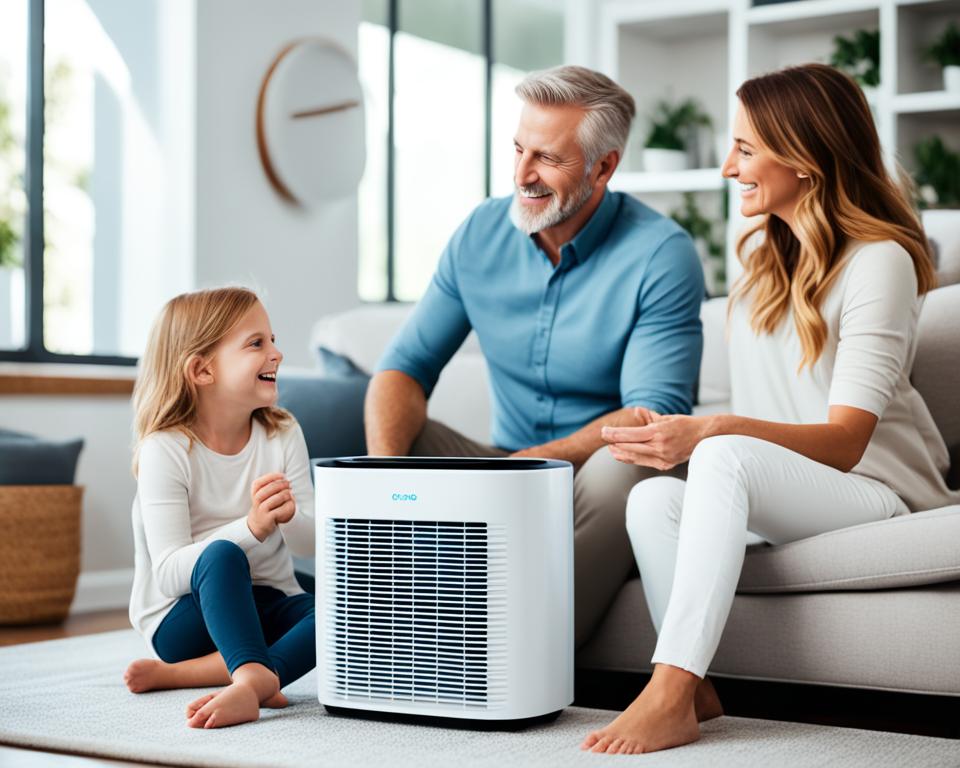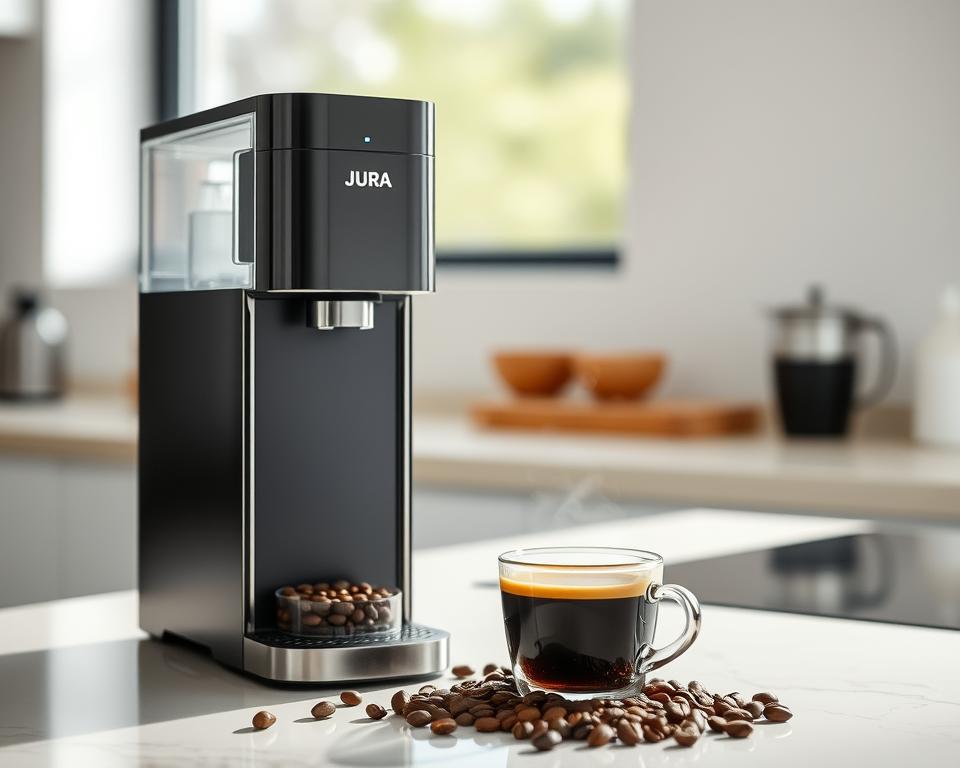Maintaining good indoor air quality is essential for a healthy living environment. This article explores how a whole home air purifier can help improve air quality throughout your living spaces. It will cover the benefits of using a whole home air purifier, how they work, and factors to consider when choosing the right unit for your home. The article will also discuss installation, maintenance, and the advantages of integrating air purifiers with smart home systems.
Read more interesting information at ::lesdamesmiami
Introduction to Whole Home Air Purifiers
Maintaining a healthy and comfortable indoor environment is a top priority for many homeowners. One innovative solution that is gaining popularity is the whole home air purifier. These centralized air filtration systems are designed to improve the air quality throughout an entire living space, rather than just a single room.
What is a Whole Home Air Purifier?
A whole home air purifier is typically integrated with a home’s HVAC (Heating, Ventilation, and Air Conditioning) system, allowing the purified air to be distributed evenly throughout the residence. These advanced systems work by drawing in air from various locations, filtering out a wide range of indoor air pollutants, and then circulating the clean air back into the living spaces.
Benefits of Improving Indoor Air Quality
The primary benefits of using a whole home air purifier include reduced exposure to allergens, improved respiratory health, and a more comfortable living environment. By effectively removing indoor air pollutants such as dust, pollen, pet dander, and volatile organic compounds (VOCs), these systems can significantly enhance the overall air quality in a home.
Understanding Indoor Air Pollution
The indoor environment can be a breeding ground for a multitude of air contaminants, including dust, pollen, pet dander, mold, and volatile organic compounds (VOCs) from household products. These indoor air pollutants can have significant negative impacts on health, exacerbating respiratory issues like asthma, triggering allergic reactions, and contributing to long-term health problems.
Sources of Indoor Air Contaminants
Common sources of indoor air contaminants include dust and dirt, pet dander, mold and mildew, and VOCs emitted from household cleaners, paints, furniture, and various other products. These pollutants can accumulate and circulate throughout the home, compromising the overall indoor air quality.
Health Risks Associated with Poor Air Quality
Exposure to indoor air pollutants can lead to a range of health issues, including respiratory problems, allergic reactions, and even long-term health concerns. Poor indoor air quality has been linked to the exacerbation of asthma symptoms, increased risk of respiratory infections, and the development of chronic conditions like lung disease and heart disease. Addressing these air quality issues is crucial for maintaining a healthier living environment.
| Common Indoor Air Contaminants | Health Risks |
|---|---|
| Dust, pollen, pet dander | Allergic reactions, asthma exacerbation |
| Mold and mildew | Respiratory problems, lung infections |
| Volatile Organic Compounds (VOCs) | Headaches, nausea, long-term health issues |
How Whole Home Air Purifiers Work
Whole home air purifiers play a crucial role in improving indoor air quality throughout your living spaces. These advanced systems work by efficiently drawing in air from various areas of your home, filtering out a wide range of contaminants, and then recirculating the purified air back into the environment.
Air Filtration Technologies
At the heart of whole home air purifiers are state-of-the-art air filtration technologies, such as HEPA (High-Efficiency Particulate Air) filters. These highly effective filters are designed to capture a vast majority of airborne pollutants, including dust, pollen, pet dander, mold spores, and other microscopic particles. By utilizing advanced filtration systems, whole home air purifiers can significantly reduce the presence of these allergens and contaminants, providing a healthier indoor environment for you and your family.
Integration with HVAC Systems
One of the key features that sets whole home air purifiers apart is their seamless integration with the home’s HVAC (Heating, Ventilation, and Air Conditioning) system. By coupling the air purifier with the HVAC system, the purified air can be evenly distributed throughout the entire living space, ensuring that all rooms benefit from improved air quality and air filtration. This comprehensive approach to air purification allows for a consistent and efficient delivery of clean, filtered air, creating a comfortable and healthier indoor atmosphere.
Choosing the Right Whole Home Air Purifier
When selecting a whole home air purifier, it’s crucial to consider several factors to ensure you choose the most suitable option for your home. These factors include the size of your living space, your specific air quality needs, energy efficiency, and the type of air filtration technology employed by the purifier.
Factors to Consider When Selecting a Unit
The size of your home is a primary consideration when choosing a whole home air purifier. The unit’s coverage area must be adequate to effectively circulate and purify the air throughout your living spaces. Additionally, pay attention to the air purification system’s clean air delivery rate (CADR), which indicates the volume of clean air the unit can produce.
Energy efficiency is another important factor, as it can impact your long-term operating costs. Look for air purifiers that are ENERGY STAR certified, ensuring they meet strict energy efficiency standards and can help you save on your utility bills.
The type of filtration technology used by the air purifier is also crucial. HEPA (High-Efficiency Particulate Air) filters are a common and effective choice, capable of capturing a wide range of airborne pollutants, including dust, pollen, and pet dander.
Comparing Different Air Purifier Models
When comparing air purifier models, consider the specific features and performance characteristics that align with your home’s needs. Look for factors such as noise level, smart home integration, and the ability to handle specific air quality issues, such as odors or volatile organic compounds (VOCs).
Researching and comparing the available whole home air purifier options can help you identify the most suitable model to improve the air quality in your living spaces and meet your unique requirements.
Installation and Maintenance
Proper installation and consistent upkeep are essential for maximizing the performance and longevity of a
whole home air purifier
. While some homeowners may opt for a DIY approach, it’s generally advisable to have a professional HVAC technician handle the installation process to ensure seamless integration with the home’s existing
HVAC
system.
Professional Installation vs. DIY
Entrusting the installation of your whole home air purifier to a qualified HVAC specialist can provide several benefits. These experts possess the necessary expertise to properly integrate the air purifier with your home’s air filtration and air purification system, ensuring optimal airflow and efficient distribution of clean air throughout your living spaces. Professional installation also helps mitigate potential issues, such as improper ductwork connections or power supply requirements, which could compromise the system’s performance or even pose safety risks.
Regular Maintenance and Filter Replacement
Maintaining the efficiency of your whole home air purifier requires ongoing attention. This includes regularly replacing the air filters, a task that is crucial for sustaining the system’s air filtration capabilities. Neglecting filter replacements can lead to reduced air purification effectiveness and potentially even damage the internal components of the unit. By adhering to the manufacturer’s recommended maintenance schedule, you can ensure your whole home air purifier continues to deliver optimal indoor air quality for your family.
Whole Home Air Purifier Brands and Models
The whole home air purifier market offers a diverse range of brands and models, each catering to different needs and preferences. Some of the leading names in the industry include Aprilaire, Carrier, Honeywell, and Lennox, among others. These manufacturers provide a variety of whole home air purifier options that can accommodate various home sizes, budgets, and specific air quality requirements.
When selecting a whole home air purification system, it’s important to research and compare the features and performance of different models. Key factors to consider include the coverage area, HEPA filter efficiency, noise levels, energy consumption, and any additional functionalities, such as integration with smart home systems or advanced air quality monitoring capabilities.
| Brand | Model | Coverage Area | HEPA Filter | Smart Home Integration |
|---|---|---|---|---|
| Aprilaire | Air Purifier 5000 | 3,000 sq. ft. | Yes | Yes |
| Carrier | Infinity Air Purifier | 4,500 sq. ft. | Yes | Yes |
| Honeywell | Perfect Air Purifier | 2,500 sq. ft. | Yes | No |
| Lennox | PureAir S Air Purifier | 3,000 sq. ft. | Yes | Yes |
By thoroughly researching and comparing the features of different whole home air purifier brands and models, homeowners can make an informed decision and select the most suitable option for their specific needs and living space.
Improving Air Quality in Specific Rooms
Whole home air purifiers can significantly enhance the air quality within specific rooms and living spaces. These systems are designed to effectively address the unique air quality needs of different areas throughout the home.
Bedrooms and Living Areas
In bedrooms and living areas, whole home air purifiers can help reduce the presence of common allergens, such as dust and pet dander, which can trigger respiratory issues and disrupt sleep. Additionally, these systems can minimize the impact of volatile organic compounds (VOCs) emanating from furniture, carpets, and other household items, creating a more comfortable and healthier environment.
Kitchens and Bathrooms
Kitchens and bathrooms often harbor various airborne contaminants, including cooking fumes, odors, and moisture-related pollutants. Whole home air purifiers can effectively remove these pollutants, leaving these spaces with fresher and cleaner air. By addressing the unique air quality challenges in kitchens and bathrooms, these systems contribute to a more pleasant and hygienic indoor environment throughout the home.
Air Purifiers for Allergies and Asthma
Whole home air purifiers are particularly beneficial for individuals with allergies and asthma, as they can significantly reduce the presence of airborne allergens, such as pollen, pet dander, and dust mites. By effectively removing these triggers from the air, whole home air purifiers can help alleviate respiratory symptoms and improve overall respiratory health. This can be especially important for households with family members who suffer from chronic allergies or asthma.
Reducing Airborne Allergens
One of the primary advantages of using a whole home air purifier for those with allergies is its ability to capture and remove a wide range of allergens from the air. These systems are designed to filter out fine particulate matter, including pollen, pet dander, and dust mites, which are common triggers for allergy sufferers. By continuously circulating and purifying the air throughout the home, whole home air purifiers can significantly reduce the exposure to these allergens, providing much-needed relief for those with seasonal or year-round allergies.
Improving Respiratory Health
In addition to reducing airborne allergens, whole home air purifiers can also play a crucial role in improving overall respiratory health, especially for individuals with asthma. By removing pollutants, irritants, and other harmful particles from the air, these systems can help minimize the frequency and severity of asthmatic symptoms, such as wheezing, coughing, and shortness of breath. This can lead to a better quality of life and reduced reliance on medication for those with chronic respiratory conditions.
Combating Odors and VOCs
Whole home air purifiers are not only effective at removing particulate matter, but they can also play a crucial role in eliminating household odors and reducing the presence of volatile organic compounds (VOCs). VOCs are emitted from a variety of household products, such as paints, cleaning supplies, and furniture, and can have negative health effects.
Eliminating Household Odors
Whole home air purifiers equipped with advanced filtration technologies, such as activated carbon filters, can effectively capture and neutralize a wide range of odors. By targeting and removing these unwanted scents, these systems create a fresher and more pleasant indoor environment, enhancing the overall comfort and livability of the home.
Removing Volatile Organic Compounds (VOCs)
In addition to eliminating household odors, whole home air purifiers can also help reduce the presence of volatile organic compounds (VOCs). These compounds can be released from a variety of household items and can have adverse effects on indoor air quality and occupant health. By utilizing specialized air filtration methods, whole home air purifiers can effectively capture and neutralize these VOCs, contributing to a healthier and more odor-free living environment.

Energy Efficiency and Cost-Effectiveness
Whole home air purifiers can be designed with energy-efficient features, allowing them to operate at lower energy consumption levels while still providing effective air purification. This can lead to reduced energy costs for homeowners, as the air purifier’s integration with the home’s HVAC system can improve the overall efficiency of the entire climate control system.
Energy Savings with Air Purifiers
By optimizing the energy usage of whole home air purifiers, homeowners can enjoy significant savings on their energy bills. The integration of these systems with the HVAC network ensures that the purified air is distributed efficiently throughout the living space, reducing the strain on the heating and cooling components and enhancing the overall energy efficiency of the home.
Long-Term Cost Benefits
In addition to the immediate energy savings, whole home air purifiers can also provide long-term cost benefits. Improved indoor air quality can lead to reduced health-related expenses, such as fewer visits to the doctor for respiratory issues or allergy-related problems. Furthermore, the extended lifespan of HVAC equipment due to the reduced strain from cleaner air can translate into substantial cost savings over time, making whole home air purifiers a worthwhile investment for many households.
Integrating Air Purifiers with Smart Home Systems
The integration of whole home air purifiers with smart home technology has revolutionized the way homeowners manage and optimize their indoor air quality. With the increasing popularity of smart home systems, many air purification units now offer seamless connectivity, allowing users to remotely monitor and control their whole home air purifier from the convenience of their smartphones or voice-activated devices.
By connecting the air purification system to a smart home platform, homeowners can enjoy a host of advanced features and benefits. These include the ability to remotely adjust the air purifier settings, monitor real-time data on indoor air quality, and receive alerts for maintenance tasks, such as filter replacements. This level of control and visibility enables homeowners to maintain optimal air quality throughout their living spaces, even when they are away from home.
Furthermore, the integration of whole home air purifiers with smart HVAC systems allows for automated, intelligent adjustments based on factors like occupancy, weather conditions, and specific air quality needs. This seamless coordination ensures that the air purification process is continuously optimized, delivering clean, healthy air while maximizing energy efficiency.
By embracing the convergence of smart home technology and advanced air purification systems, homeowners can elevate their indoor air quality management to new levels of convenience, control, and efficiency, ultimately creating a more comfortable and healthier living environment.
Air Quality Monitoring and Reporting
Advanced whole home air purifiers often incorporate advanced air quality monitoring capabilities, including indoor air quality sensors that continuously track the levels of pollutants, allergens, and other contaminants within the living space. These state-of-the-art systems can provide homeowners with detailed air quality reports and real-time analytics, allowing them to better understand the air quality in their home and make informed decisions about the operation and maintenance of their whole home air purifier.
Indoor Air Quality Sensors
The integration of high-performance air quality sensors is a hallmark of modern whole home air purification systems. These sensors meticulously monitor a range of indoor air pollutants, including particulate matter, volatile organic compounds (VOCs), and even specific allergens like pollen and pet dander. By continuously measuring the levels of these contaminants, the air purifier can optimize its performance to ensure the most effective filtration and purification of the home’s air.
Air Quality Reports and Analytics
Equipped with advanced air quality monitoring capabilities, whole home air purifiers can generate comprehensive reports and detailed analytics on the indoor air quality within the living space. Homeowners can access this valuable information through user-friendly interfaces, such as mobile apps or web-based platforms, providing them with a deeper understanding of their home’s air quality. These air quality reports can be particularly useful for individuals with respiratory concerns or those who prioritize maintaining a healthy indoor environment, enabling them to make informed decisions about the operation and maintenance of their whole home air purifier.
Comparing Whole Home Air Purifiers to Portable Units
While both whole home air purifiers and portable air purifiers aim to improve indoor air quality, there are distinct differences between the two. Whole home systems offer the advantage of comprehensive air filtration throughout an entire living space, ensuring that all rooms benefit from cleaner air.
Advantages of Whole Home Systems
By integrating with a home’s HVAC system, whole home air purifiers are able to distribute purified air evenly throughout the living space, providing consistent air quality improvement in every room. This centralized approach to air filtration is particularly beneficial for larger homes or those with multiple floors, where a single portable air purifier may not be able to effectively cover the entire area.
When Portable Air Purifiers are Suitable
On the other hand, portable air purifiers may be more suitable for specific rooms or smaller living spaces, particularly in situations where a whole home system is not feasible or cost-effective. These standalone units can be easily moved and placed in the areas that require the most attention, such as bedrooms or home offices. Portable air purifiers can be a practical solution for homeowners with limited budgets or for those who only need to address air quality concerns in specific zones of their home.

Understanding the strengths and limitations of each type of air purifier can help homeowners choose the most appropriate solution for their needs, whether it’s a whole home air purifier or a portable unit.
Regulations and Certifications for Air Purifiers
The whole home air purifier industry is subject to various regulations and certification standards to ensure product safety, performance, and energy efficiency. These guidelines and certifications play a crucial role in helping consumers identify reliable and high-quality air filtration systems for their homes.
Industry Standards and Guidelines
Whole home air purifiers must adhere to industry guidelines and meet specific criteria set by organizations such as the Association of Home Appliance Manufacturers (AHAM) and the Environmental Protection Agency (EPA). These standards cover a range of factors, including air quality testing, safety regulations, and performance requirements, ensuring that air purifiers meet or exceed industry certifications and benchmarks.
Energy Star and Other Certifications
In addition to industry-specific standards, whole home air purifiers can also earn recognized certifications, such as ENERGY STAR, that demonstrate their energy efficiency and environmental friendliness. These certifications help homeowners identify air purification systems that not only provide effective air filtration, but also offer long-term cost savings and a reduced environmental impact.
By understanding the various regulations and certifications applicable to the whole home air purifier market, consumers can make informed decisions and select air purifiers that meet their needs for air quality, performance, and energy efficiency.
Conclusion
Whole home air purifiers offer a comprehensive solution for improving indoor air quality throughout a living space. By effectively removing a wide range of pollutants, allergens, and VOCs, these systems can create a healthier and more comfortable home environment. Whether you’re concerned about respiratory health, household odors, or energy efficiency, a well-chosen whole home air purifier can provide significant benefits.
By understanding the key factors to consider when selecting a unit, homeowners can make an informed decision and enjoy the advantages of improved indoor air quality. From advanced filtration technologies to smart home integration, the latest whole home air purifiers offer a comprehensive solution for maintaining a clean and healthy living space. With the ability to address a variety of air quality concerns, these systems are a valuable investment for any household seeking to enhance the overall comfort and well-being of their family.
As the awareness of indoor air pollution and its impact on health continues to grow, the demand for effective whole home air purifiers is likely to increase. By staying informed about the latest advancements in this industry and making a well-informed purchase, homeowners can take a proactive step towards improving the air they breathe and creating a healthier, more enjoyable living environment.



